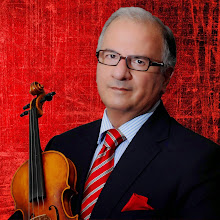 Boke is a Japanese word meaning fuzzy. The spelling has been changed to bokeh since 2000, maybe to suggest the correct pronunciation to English speakers, in photography. It is now a photographic term referring to out-of-focus areas (generally background) in photos. Bokeh techniques are mostly used in the portraiture and flower categories of photography. A blurred background makes the subject stand out and making the image look like three dimensional.
Boke is a Japanese word meaning fuzzy. The spelling has been changed to bokeh since 2000, maybe to suggest the correct pronunciation to English speakers, in photography. It is now a photographic term referring to out-of-focus areas (generally background) in photos. Bokeh techniques are mostly used in the portraiture and flower categories of photography. A blurred background makes the subject stand out and making the image look like three dimensional.A well blurred background can be achieved with:
1. Wide opening the camera’s pupil (aperture)… the wider the opening, the more blur or, in photographic terms, the shallower depth of field.
2. Keeping the subject as close as possible to the camera with a long space between the subject and the background.
3. Using large focal length which simply means, in non-slr cameras, zooming in, and in slr’s, changing the lens to a longer one.
A combination of all three techniques above would definitely yield to much better results.
Method number one needs more clarification. The aperture (camera’s pupil) can be wider using small f numbers. By definition, f number is:
f# = Lf / D . . . . . (1)
Where f# is the scale used to control the aperture size, Lf is the focal length in millimetre, and D is the diameter of the opening in millimetre. Note that Lf in equation (1) is the real focal length and not the 35mm equivalent. As an example, let’s see how wide would an f/2.8 in an slr camera with 36mm focal length open the aperture:
f# = Lf / D . . . . . eq. (1)
2.8 = 36 / D
thus D = 12.86 mm.
This diameter is a very good size for a nice bokeh, assuming other factors are appropriate. Next, let’s calculate what f# could open the pupil of a point-and-shoot camera with 6mm real focal length that much:
f# = Lf / D . . . . . eq. (1)
f# = 6 / 12.86 = 0.47 say f/0.5.
Further, it would be of interest to know how effective (wide) could an f# of 2.8 in a point-and-shoot camera be compared to an slr:
f# = Lf / D . . . . . eq. (1)
thus D1 = Lf1 / f#1 and D2 = Lf2 / f#2.
Index 1 shows the p&s while index 2 shows the slr. We want to find the f# in an slr to open the aperture as much as that of f/2.8 in an point-and-shoot, so
D1 = D2
Lf1 / f#1 = Lf2 / f#2
6 / 2.8 = 36 / f#2
f#2 = 16.8 say f/16.
What does this calculation say? It clearly shows that f/2.8 in a simple point-and-shoot camera is equivalent to f/16 in an slr! Have you ever tried to get a bokeh with f/2.8 setting on your camera and not succeeded much? Well, this is the reason! With point-and-shoot cameras the best you can do for a nice bokeh is zooming as mch as you can or your camera lets. Zooming in zoom lenses dramatically raises the focal length. Assuming your regular (no zoom) focal length to be 6 mm, at 6x zoom you get a focal length of 36 mm similar to an slr, and this is the ground you can stand on with a real f/2.8 for instance.
Watch an interesting short video discussing depth of field:
Video taken from YouTube



